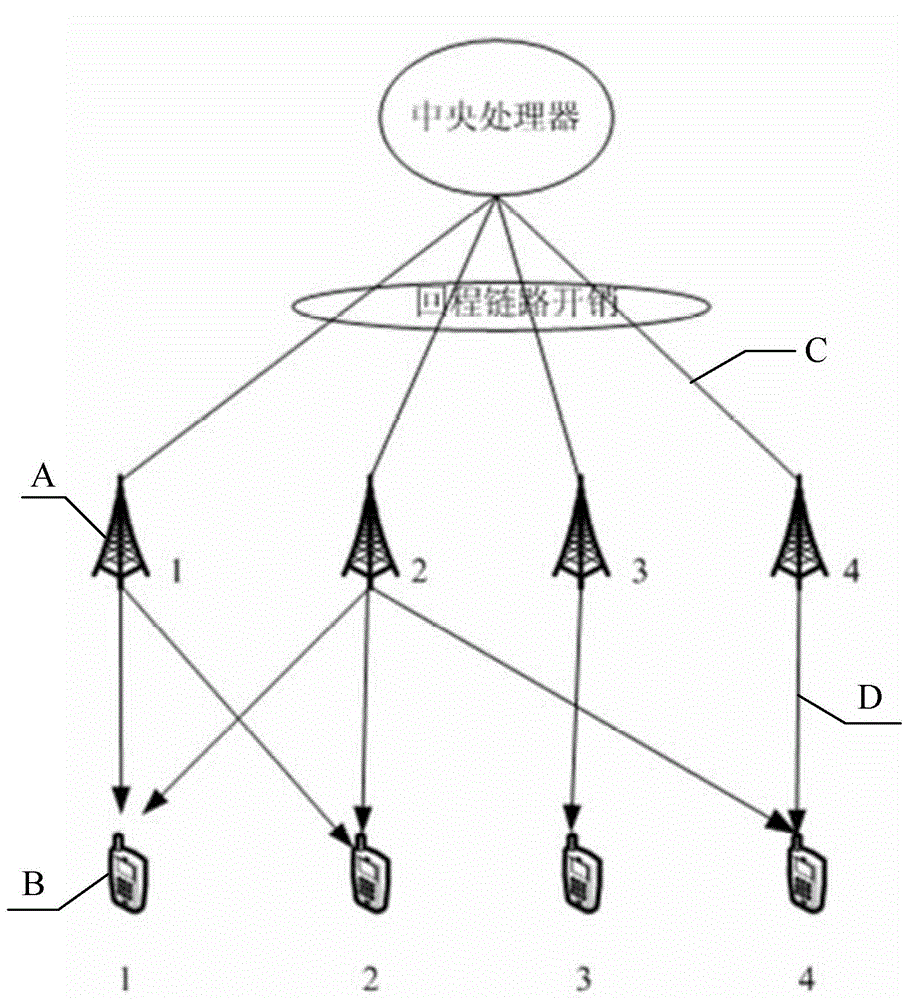Preprocessing-based branch dividing and cutting combined network optimizing and wave beam forming method
A joint network and beamforming technology, applied in network planning, advanced technology, electrical components, etc., can solve the problem of high complexity of the beamforming system
- Summary
- Abstract
- Description
- Claims
- Application Information
AI Technical Summary
Problems solved by technology
Method used
Image
Examples
specific Embodiment approach 1
[0099] The specific embodiment one, based on preprocessing branch pruning joint network optimization and beamforming method, it comprises the following steps:
[0100] Step 1. According to the total power consumption model of the base station and the capacity overhead of the backhaul link, establish a trade-off model between power and backhaul capacity
[0101] F = Σ l = 1 L a l P l IDL + Σ l = 1 L η l Σ k = 1 K | | w lk | | ...
specific Embodiment approach 2
[0118] Specific implementation mode 2. In this specific implementation mode, the specific steps of establishing a compromise model of power and backhaul capacity described in step 1 are:
[0119]Step 1: Build a system model. Suppose there are L base stations, and each base station is equipped with N antennas, and Λ={1,...,L} represents the set of base stations. The scheduled users are K single-antenna users, and K={1,...,K} represents a user set. The multi-cell centralized network architecture is as follows figure 1 shown. Beamforming is used for each user's data, then the transmitted signal at the lth base station is
[0120] x l = Σ k = 1 K w lk s k , ∀ l ∈ Λ - - - ( ...
specific Embodiment approach 3
[0155] DETAILED DESCRIPTION OF THE PREFERRED EMBODIMENT Three, in this specific implementation, the specific steps of converting the non-convex SINR constraint into a second-order cone constraint described in step two, and performing relaxation processing on the optimization problem (P1) are:
[0156] The purpose of the present invention is to achieve a trade-off between power consumption and backhaul capacity overhead, and the problem can be modeled as
[0157] P : min w lk , a l , b lk Σ ...
PUM
 Login to View More
Login to View More Abstract
Description
Claims
Application Information
 Login to View More
Login to View More - R&D
- Intellectual Property
- Life Sciences
- Materials
- Tech Scout
- Unparalleled Data Quality
- Higher Quality Content
- 60% Fewer Hallucinations
Browse by: Latest US Patents, China's latest patents, Technical Efficacy Thesaurus, Application Domain, Technology Topic, Popular Technical Reports.
© 2025 PatSnap. All rights reserved.Legal|Privacy policy|Modern Slavery Act Transparency Statement|Sitemap|About US| Contact US: help@patsnap.com



